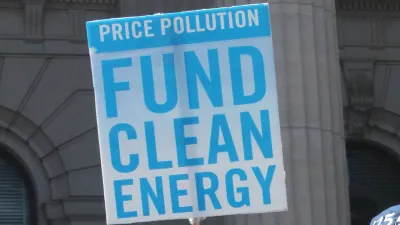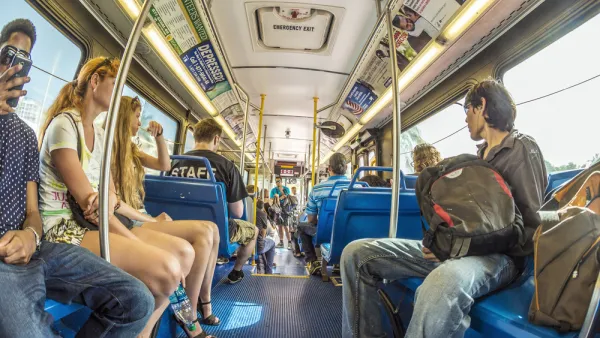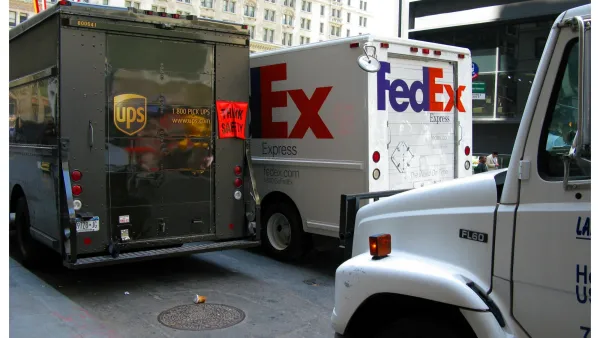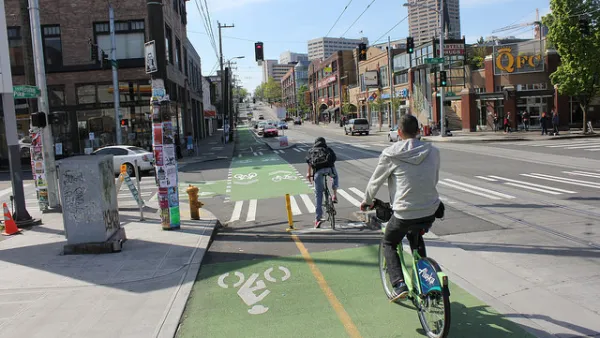Research from the Global Commission on the Economy and Climate recommends an emissions reduction program that might pay off big in the long term. Inter-city exchange and transit planning are key strategies.

According to a report from New Climate Economy, "Investing in lower-emission public transport, using more renewable energy, and increasing efficiency in commercial buildings and waste management in cities across the globe could generate $17 trillion in savings in current dollars by 2050."
"[Author] Nick Godfrey said the report—the first global analysis of projected savings from carbon reductions in cities—is intended to influence decisions at the climate summit in Paris in December." Godfrey stresses the importance of meaningful inter-city cooperation and real efforts to embrace transit and bikes.
Policy and investment decisions in major cities may set the tone for society at large. From the article: "The leading place of cities in today's world led the report to note that 'the infrastructure investments made in cities over the new few decades will lock the world into a higher- or lower-carbon path.'"
The report also discusses the short-term drawbacks of cleaner, more compact cities. "The resulting artificial shortage of land for building forces housing prices up, makes housing unaffordable for some, and leaves everyone with less money for other things, throwing some into poverty and causing income inequality to rise."
FULL STORY: Hidden Advantages of Lower-Carbon Emission Cities: $17 Trillion in Possible Savings

National Parks Layoffs Will Cause Communities to Lose Billions
Thousands of essential park workers were laid off this week, just before the busy spring break season.

Retro-silient?: America’s First “Eco-burb,” The Woodlands Turns 50
A master-planned community north of Houston offers lessons on green infrastructure and resilient design, but falls short of its founder’s lofty affordability and walkability goals.

Delivering for America Plan Will Downgrade Mail Service in at Least 49.5 Percent of Zip Codes
Republican and Democrat lawmakers criticize the plan for its disproportionate negative impact on rural communities.

Test News Post 1
This is a summary

Test News Headline 46
Test for the image on the front page.

Balancing Bombs and Butterflies: How the National Guard Protects a Rare Species
The National Guard at Fort Indiantown Gap uses GIS technology and land management strategies to balance military training with conservation efforts, ensuring the survival of the rare eastern regal fritillary butterfly.
Urban Design for Planners 1: Software Tools
This six-course series explores essential urban design concepts using open source software and equips planners with the tools they need to participate fully in the urban design process.
Planning for Universal Design
Learn the tools for implementing Universal Design in planning regulations.
EMC Planning Group, Inc.
Planetizen
Planetizen
Mpact (formerly Rail~Volution)
Great Falls Development Authority, Inc.
HUDs Office of Policy Development and Research
NYU Wagner Graduate School of Public Service





























